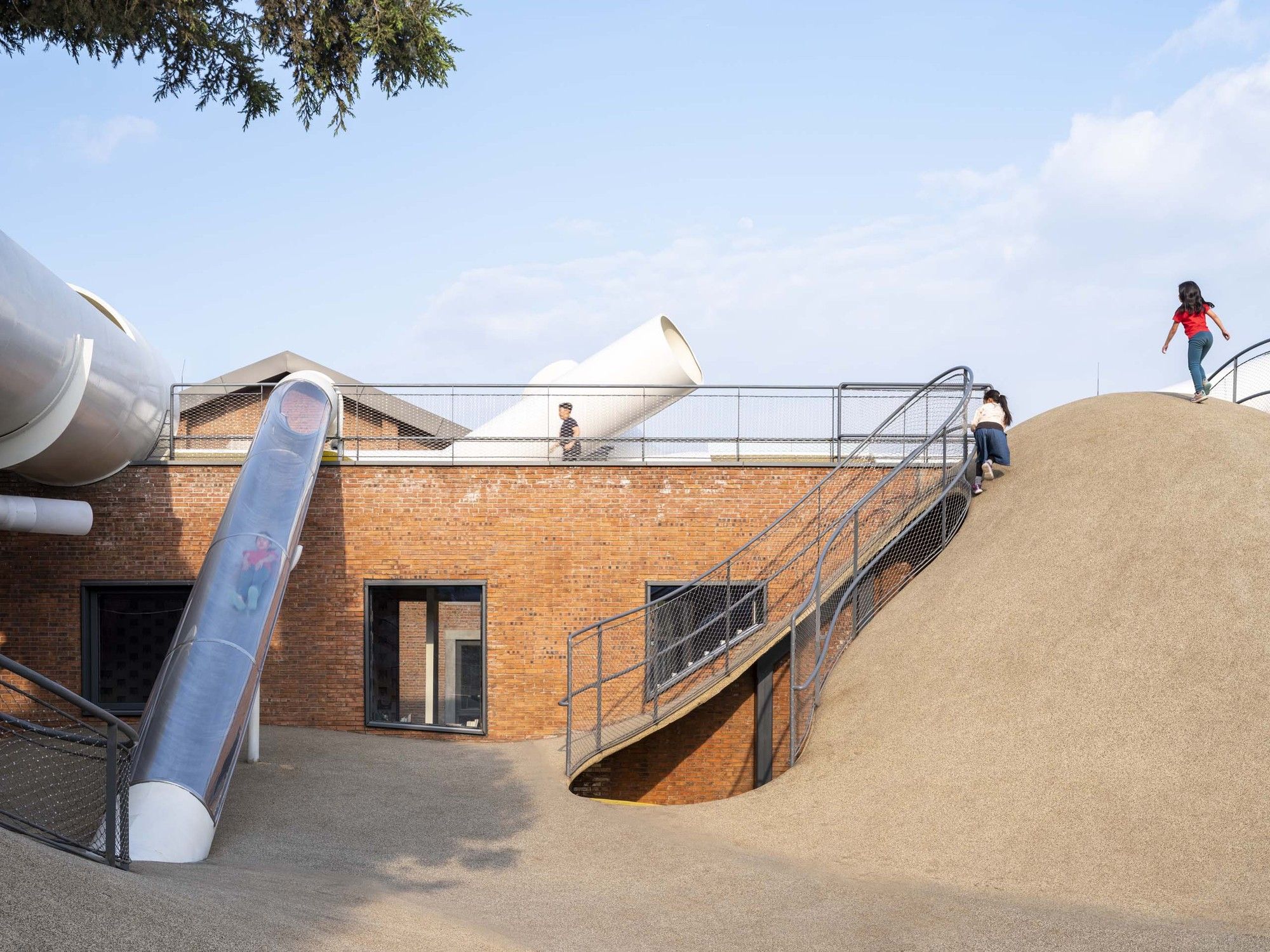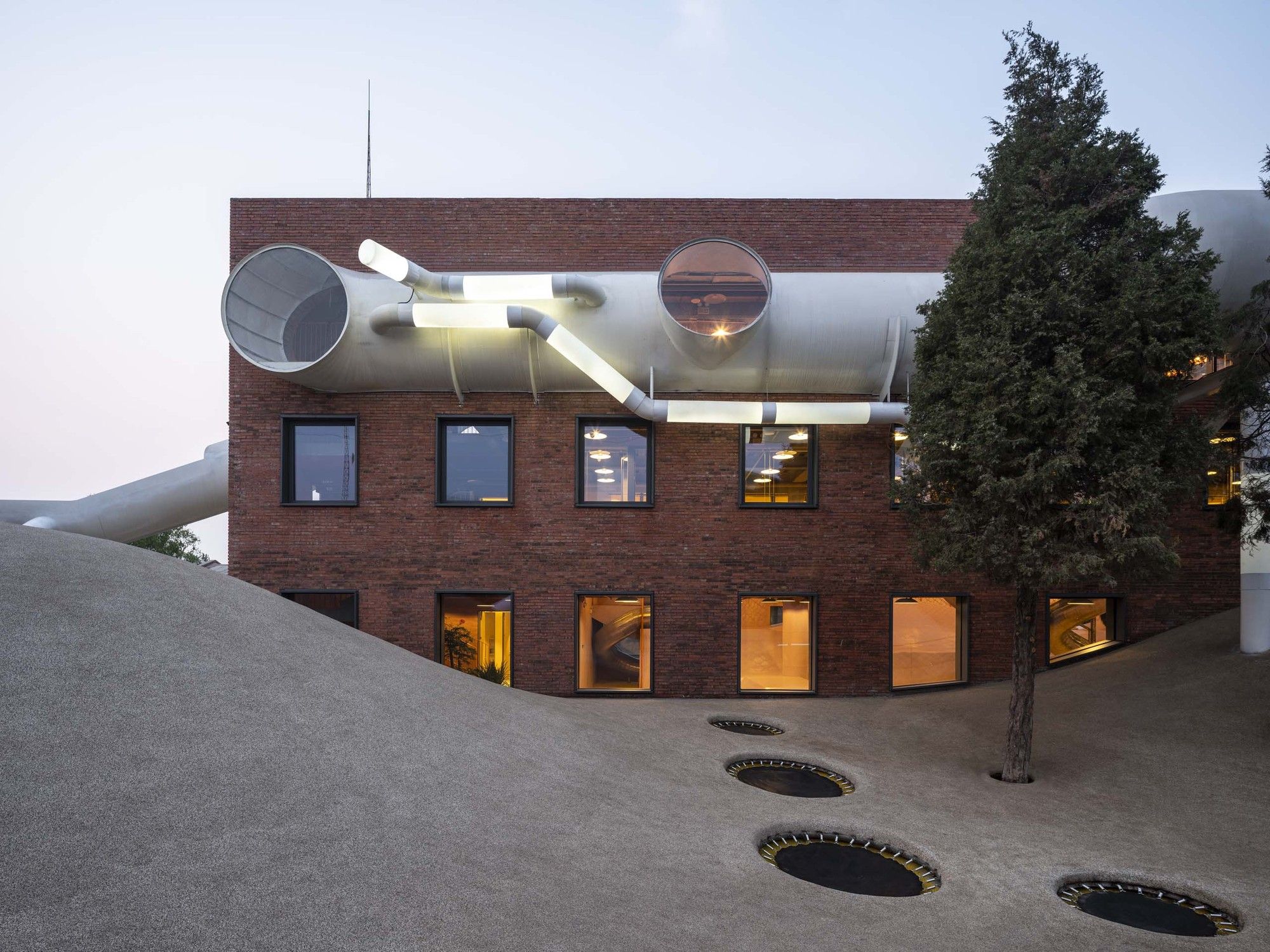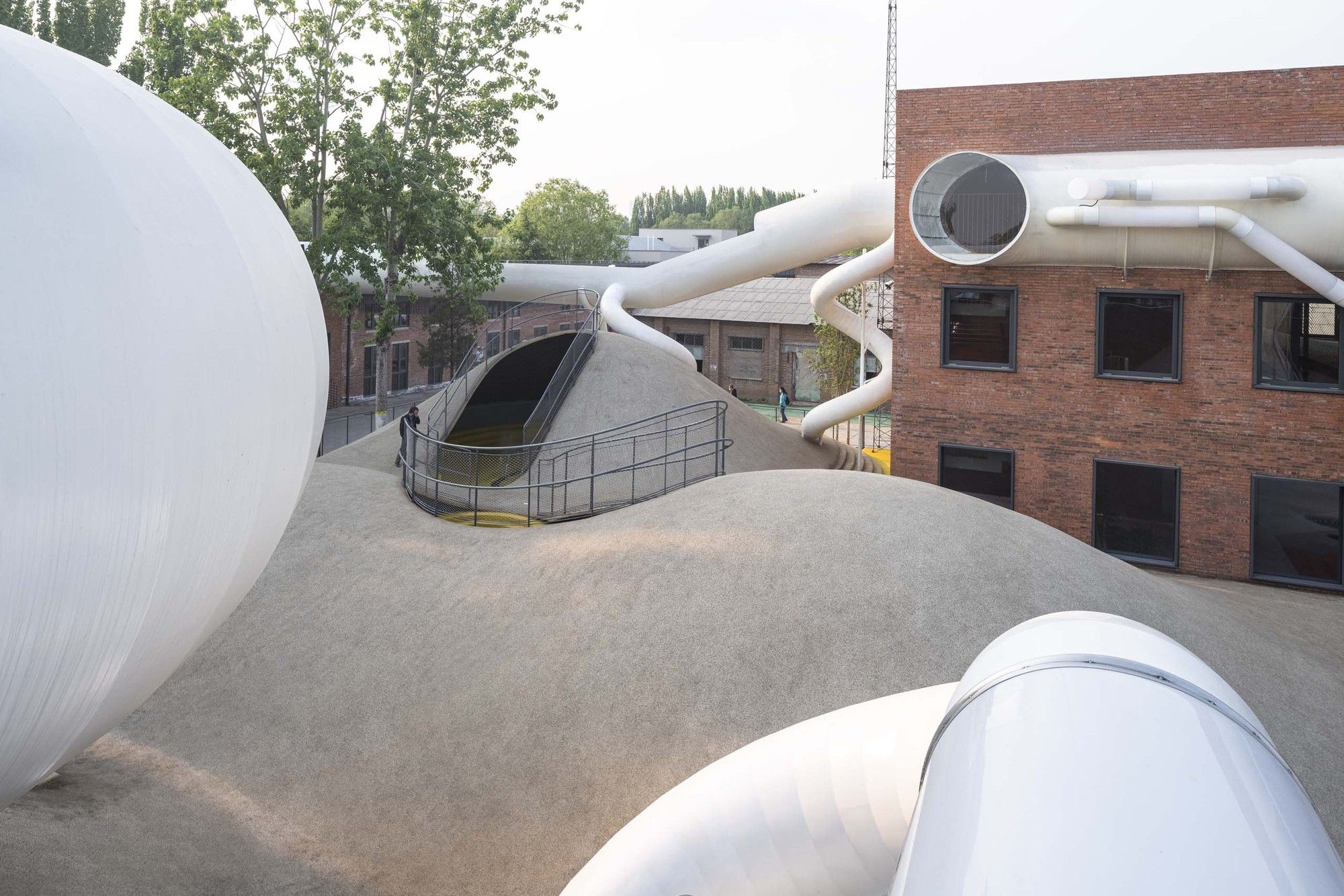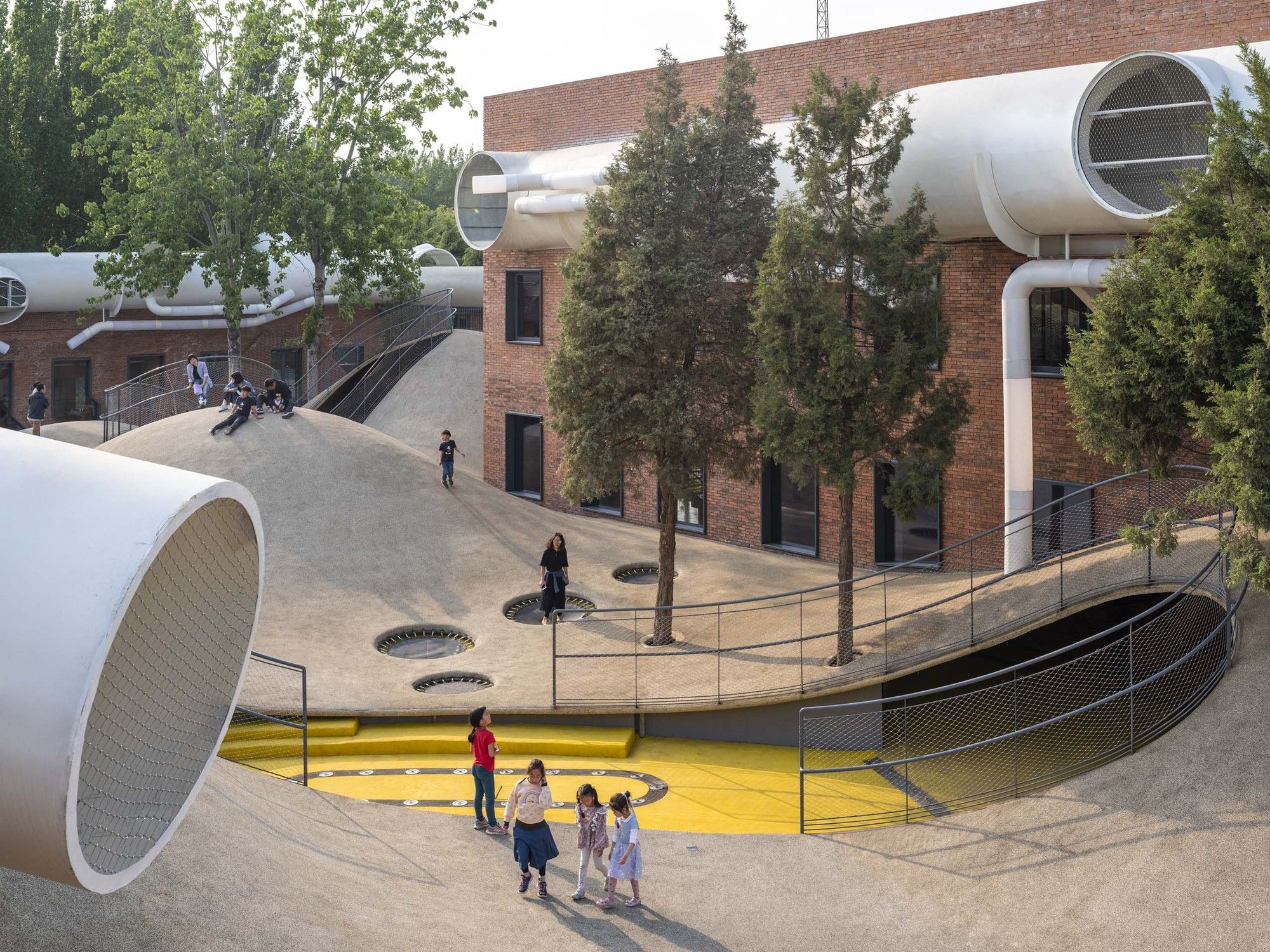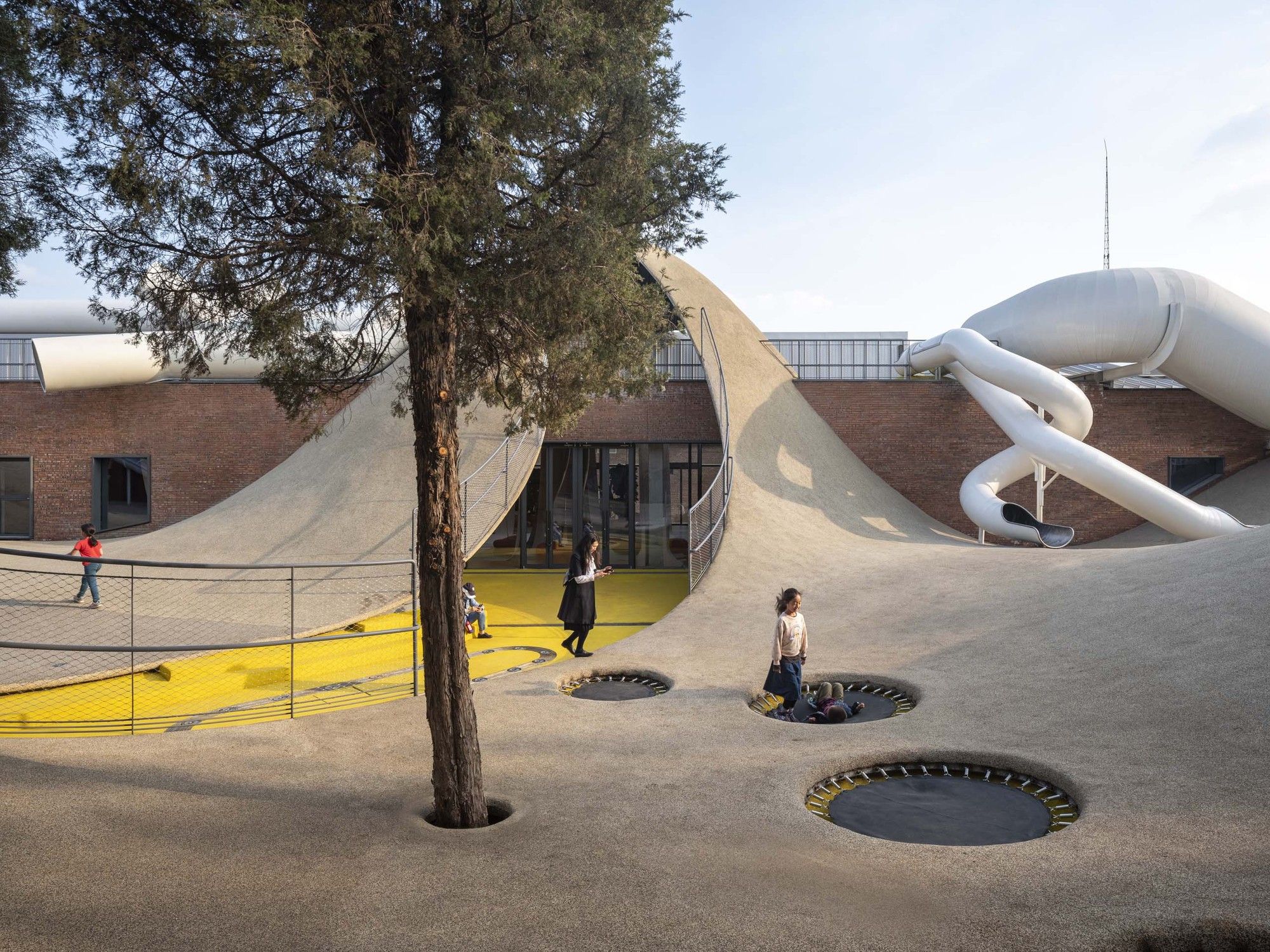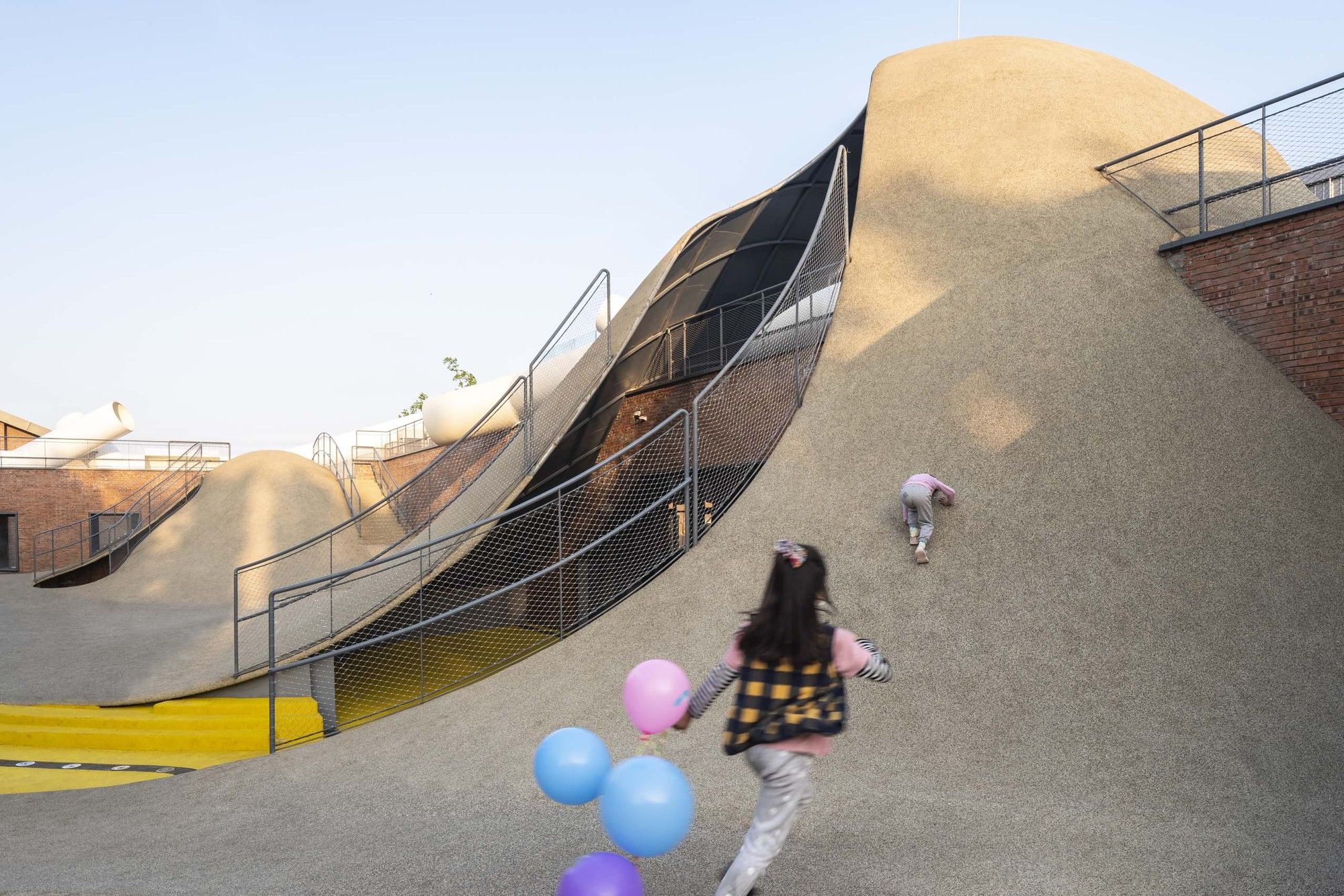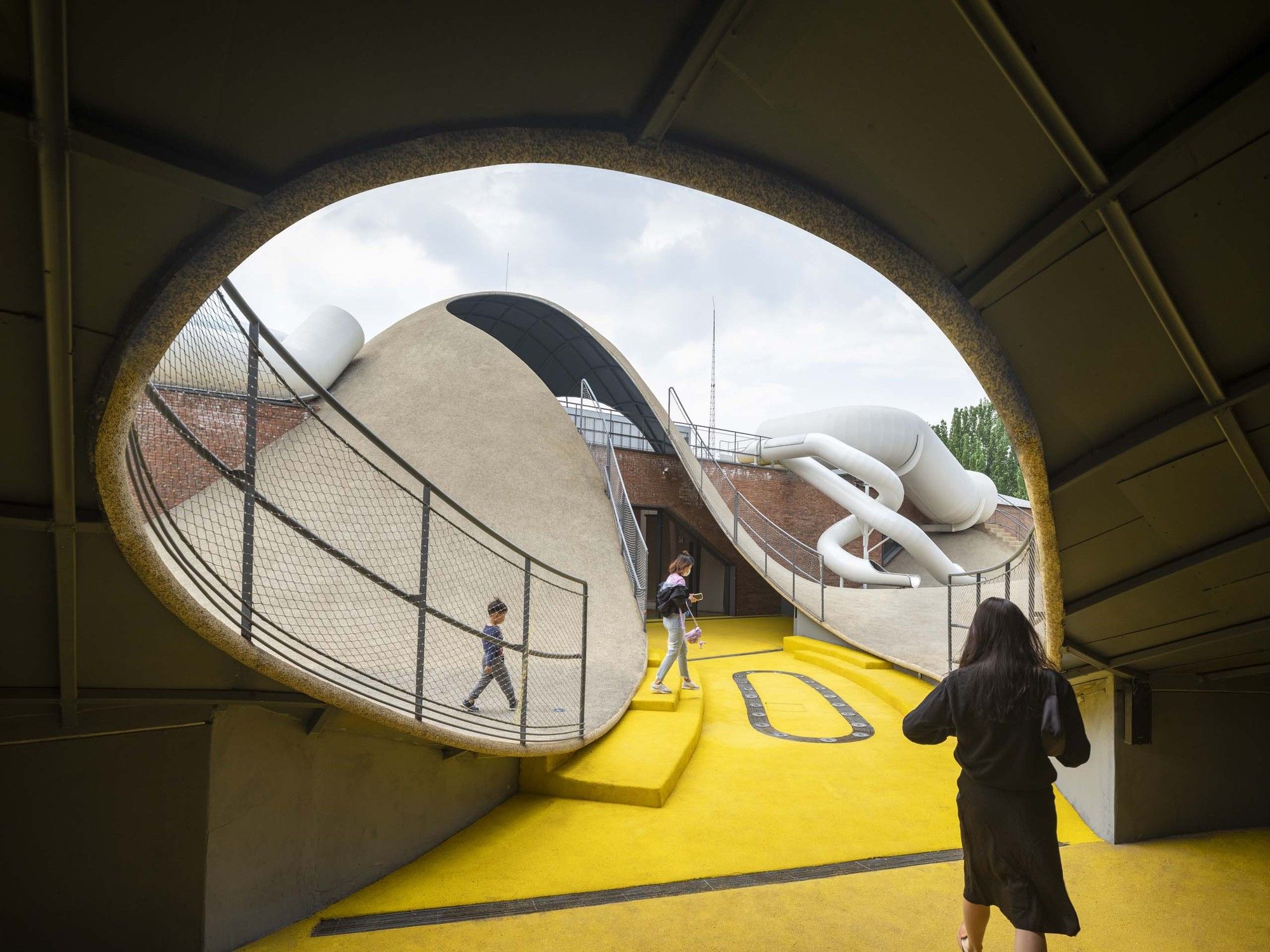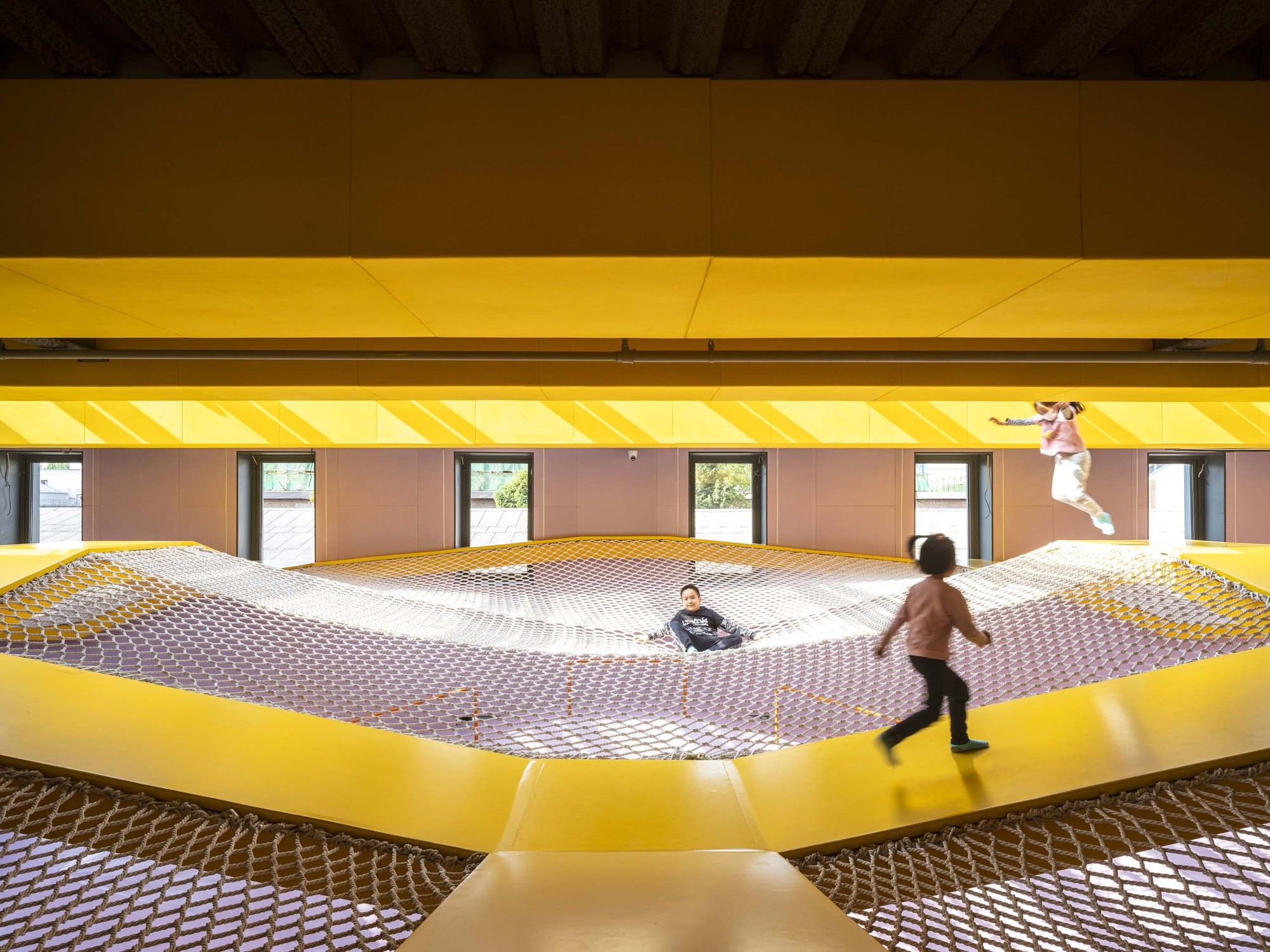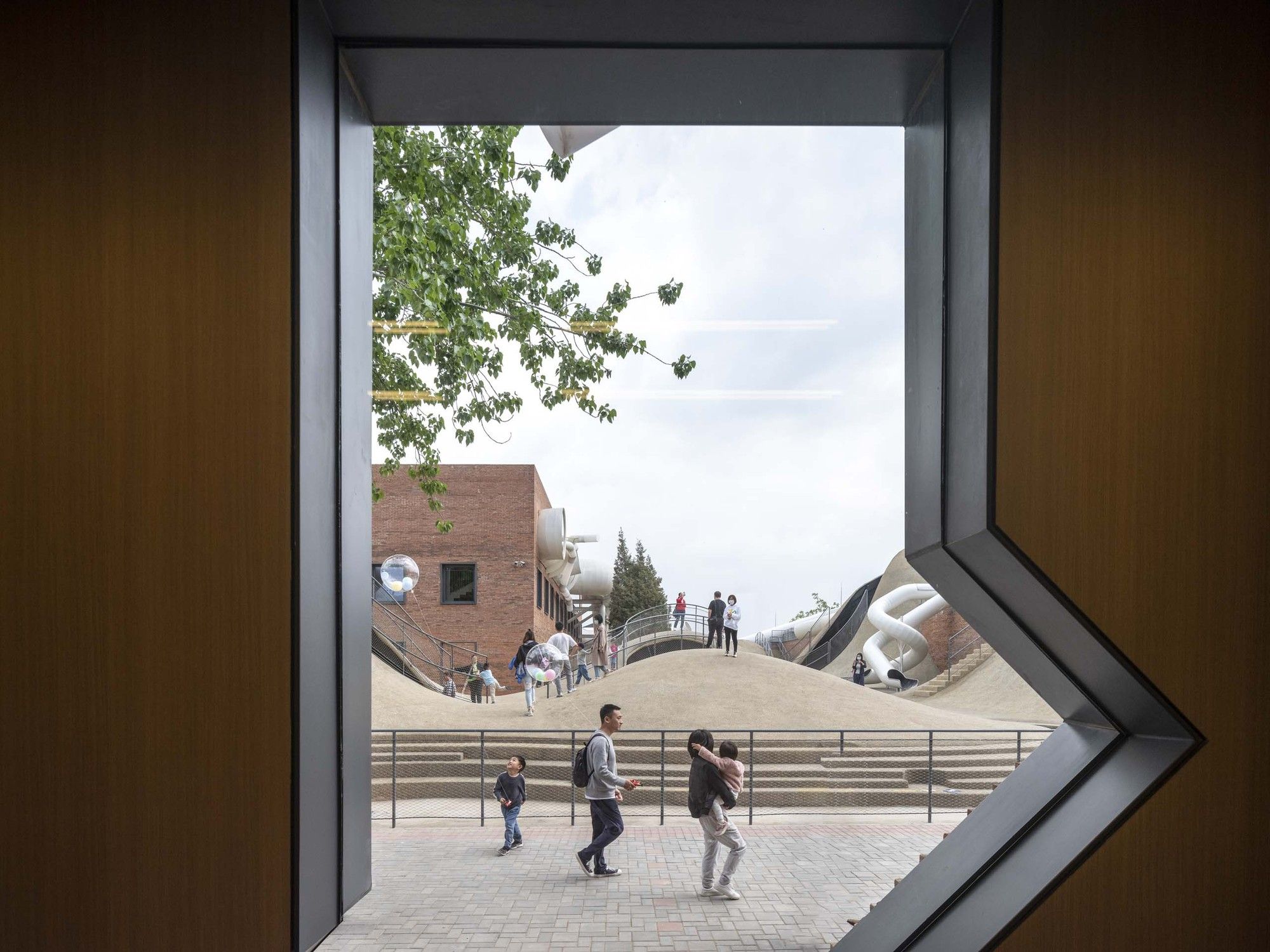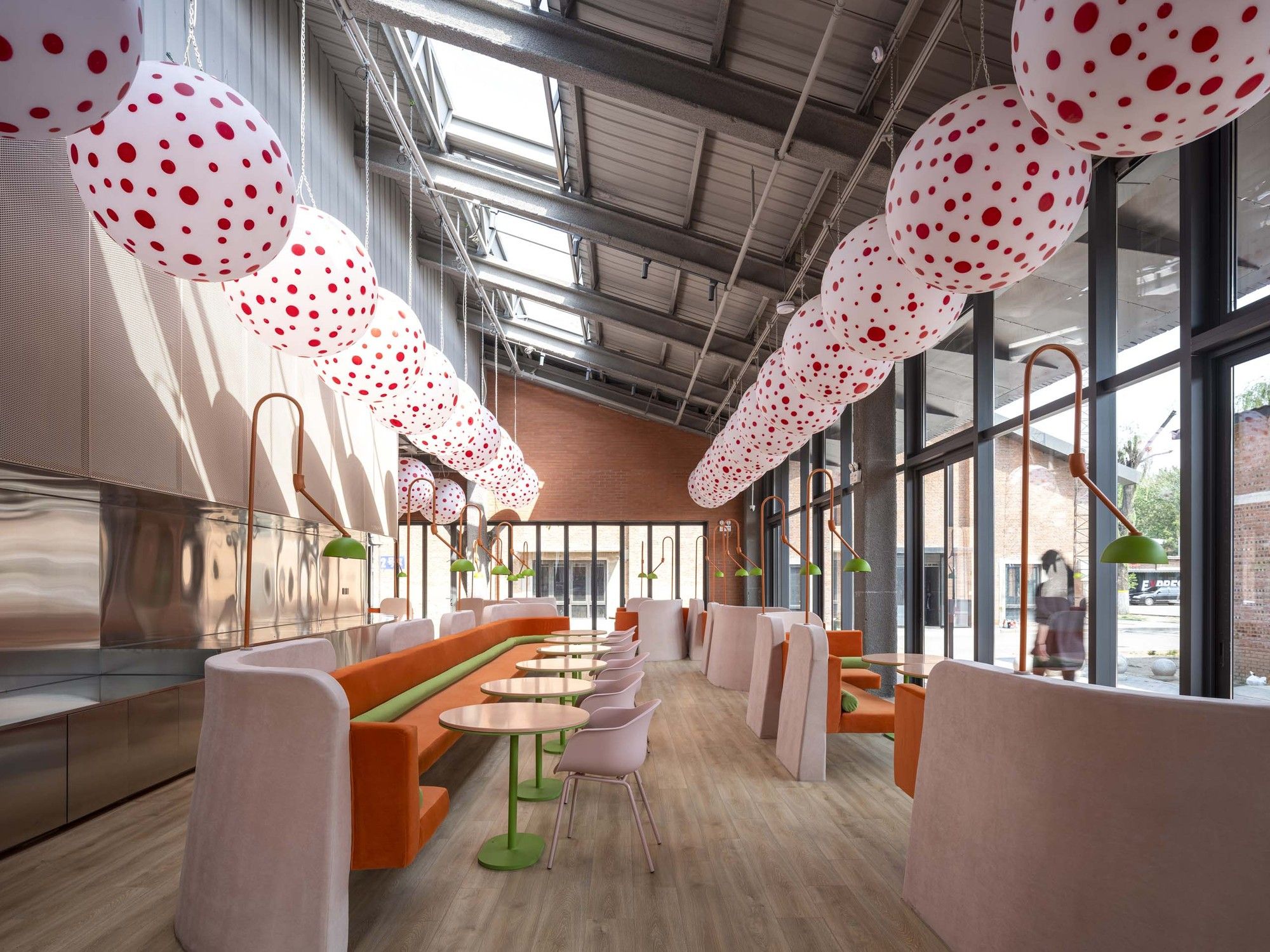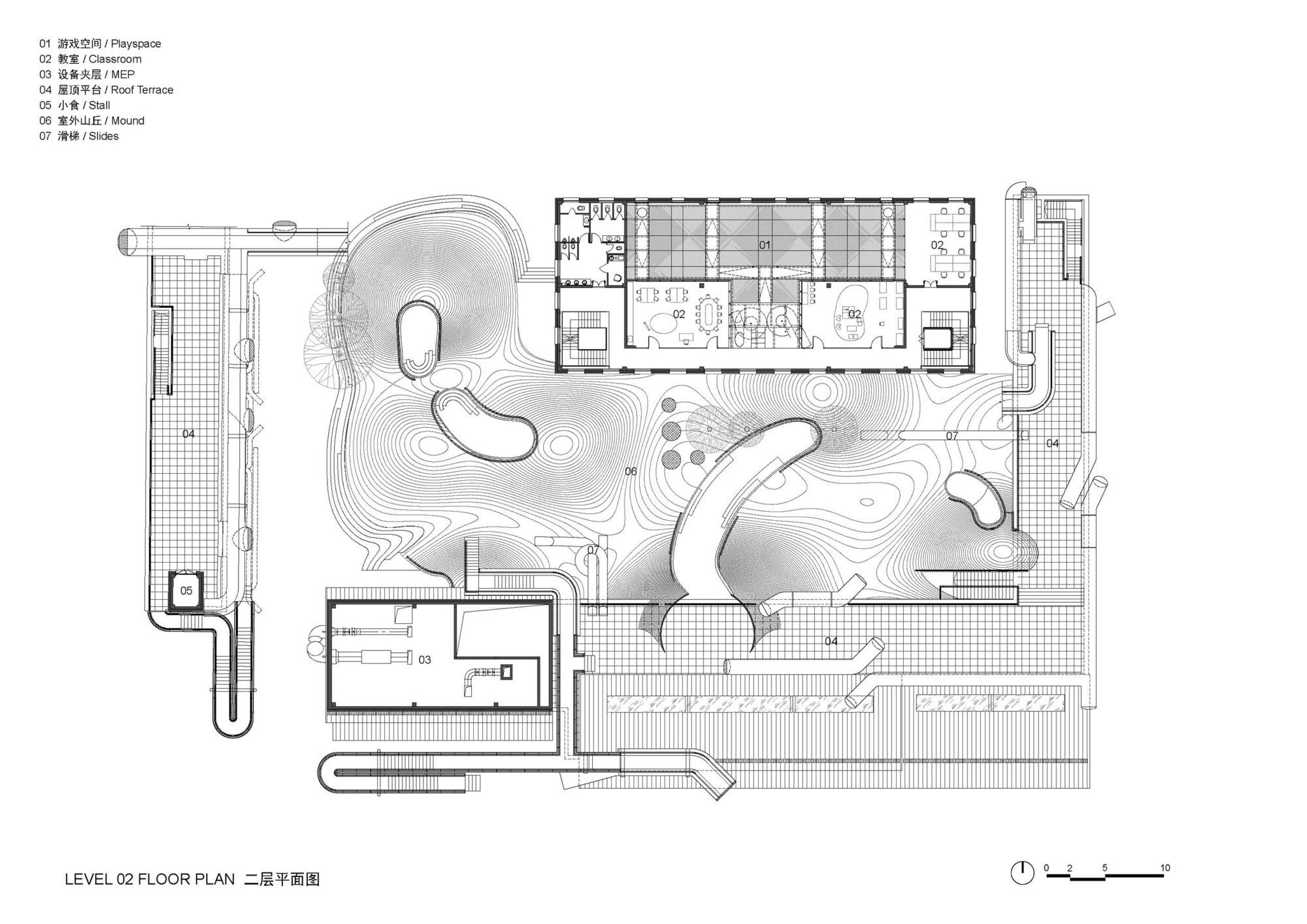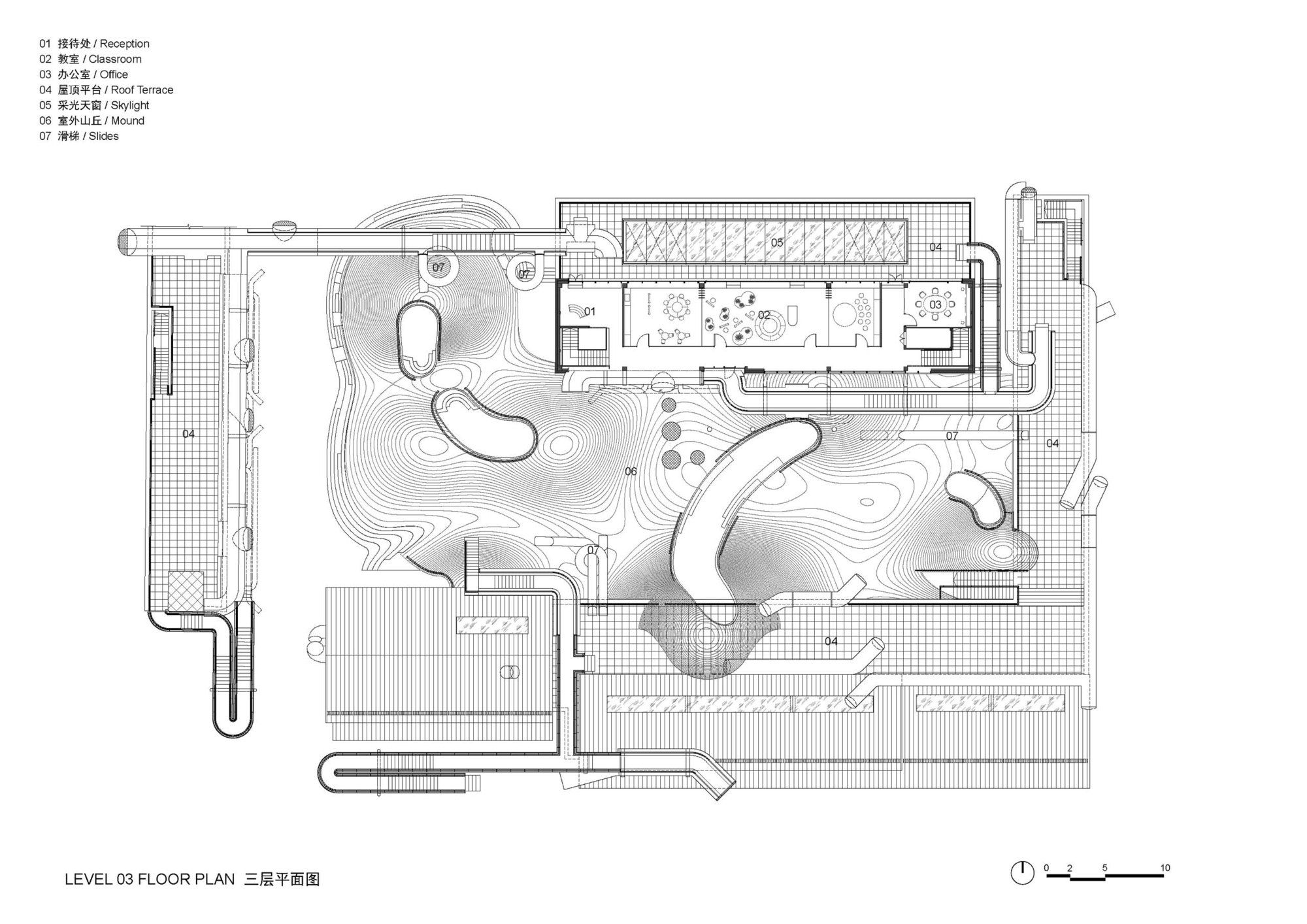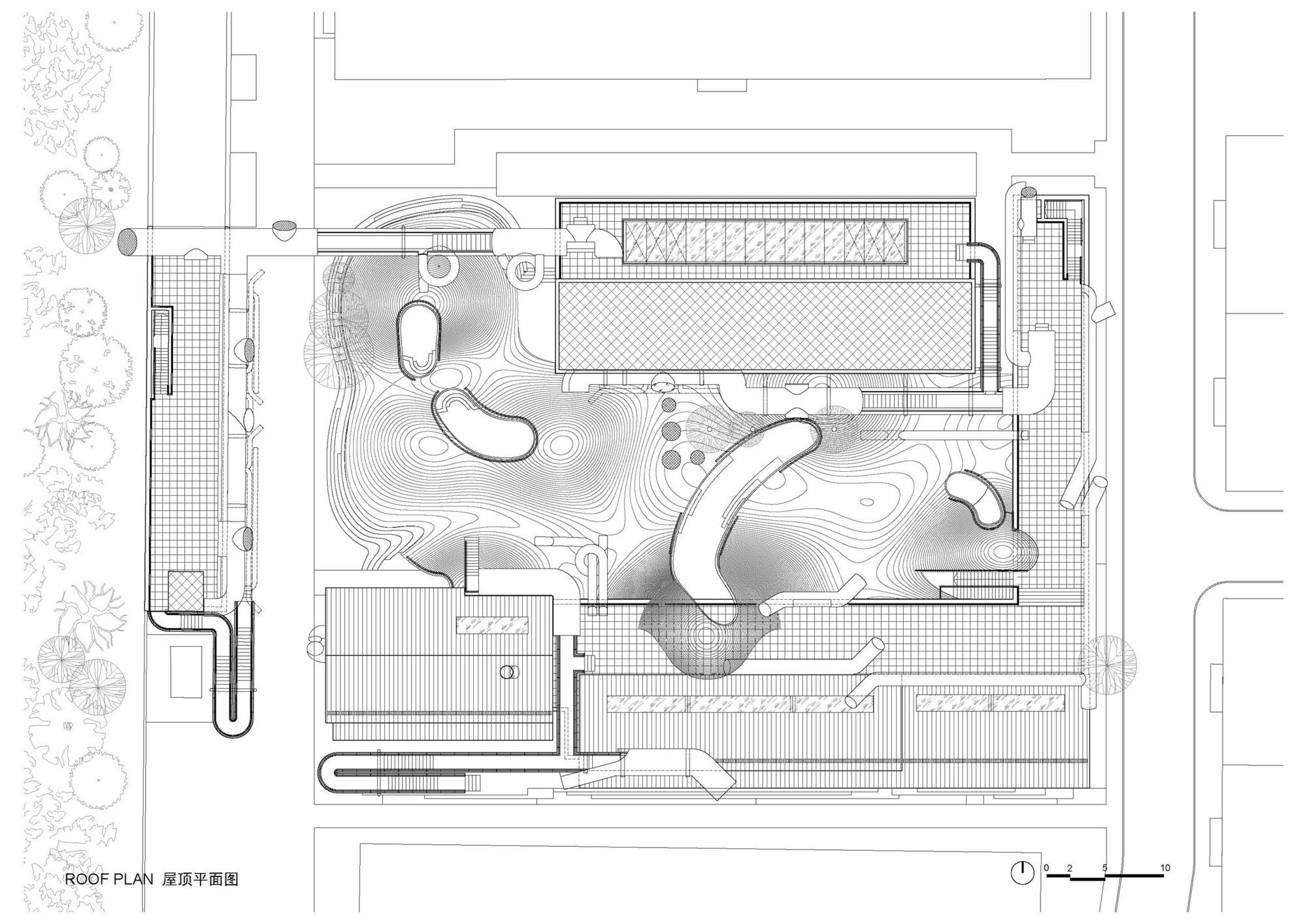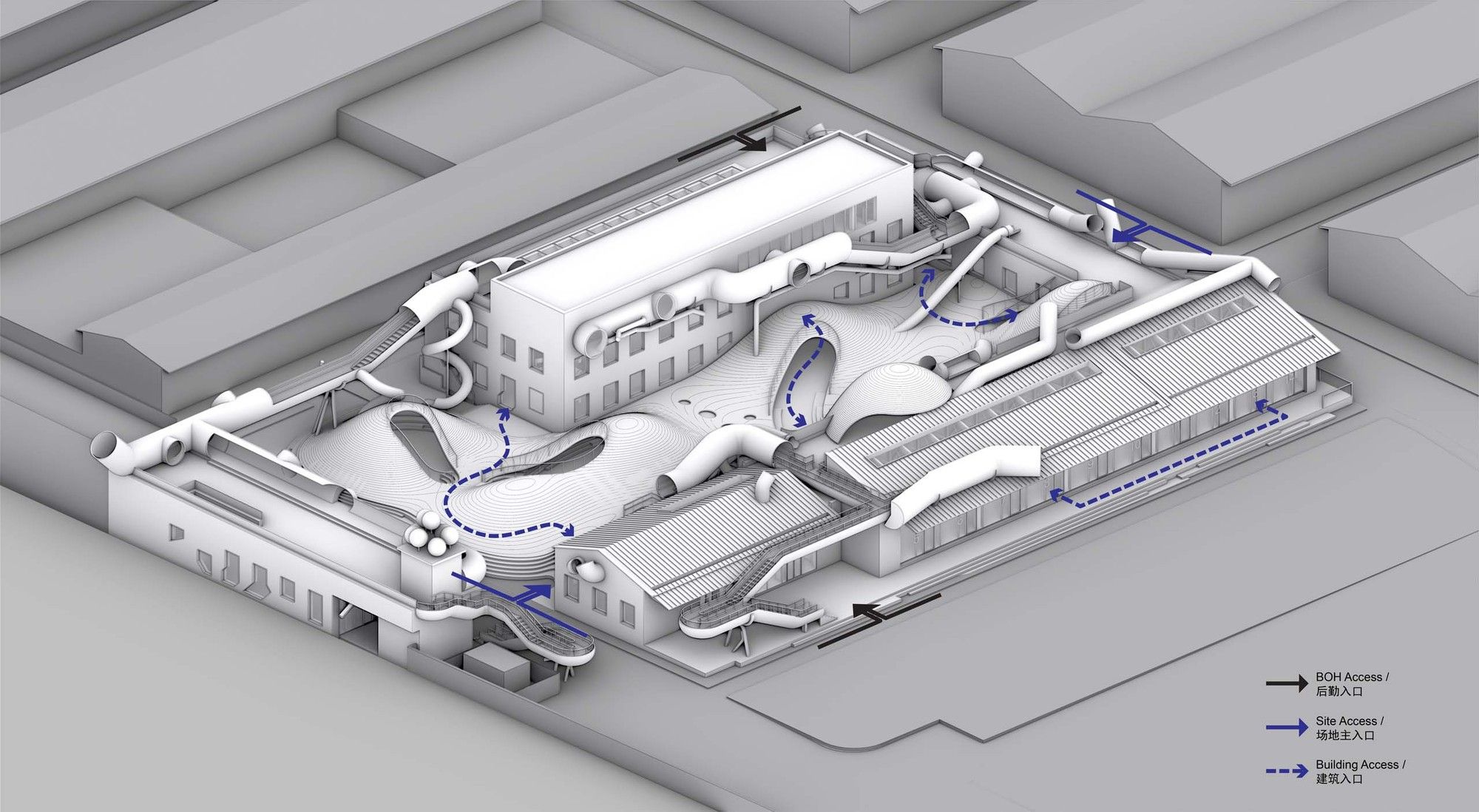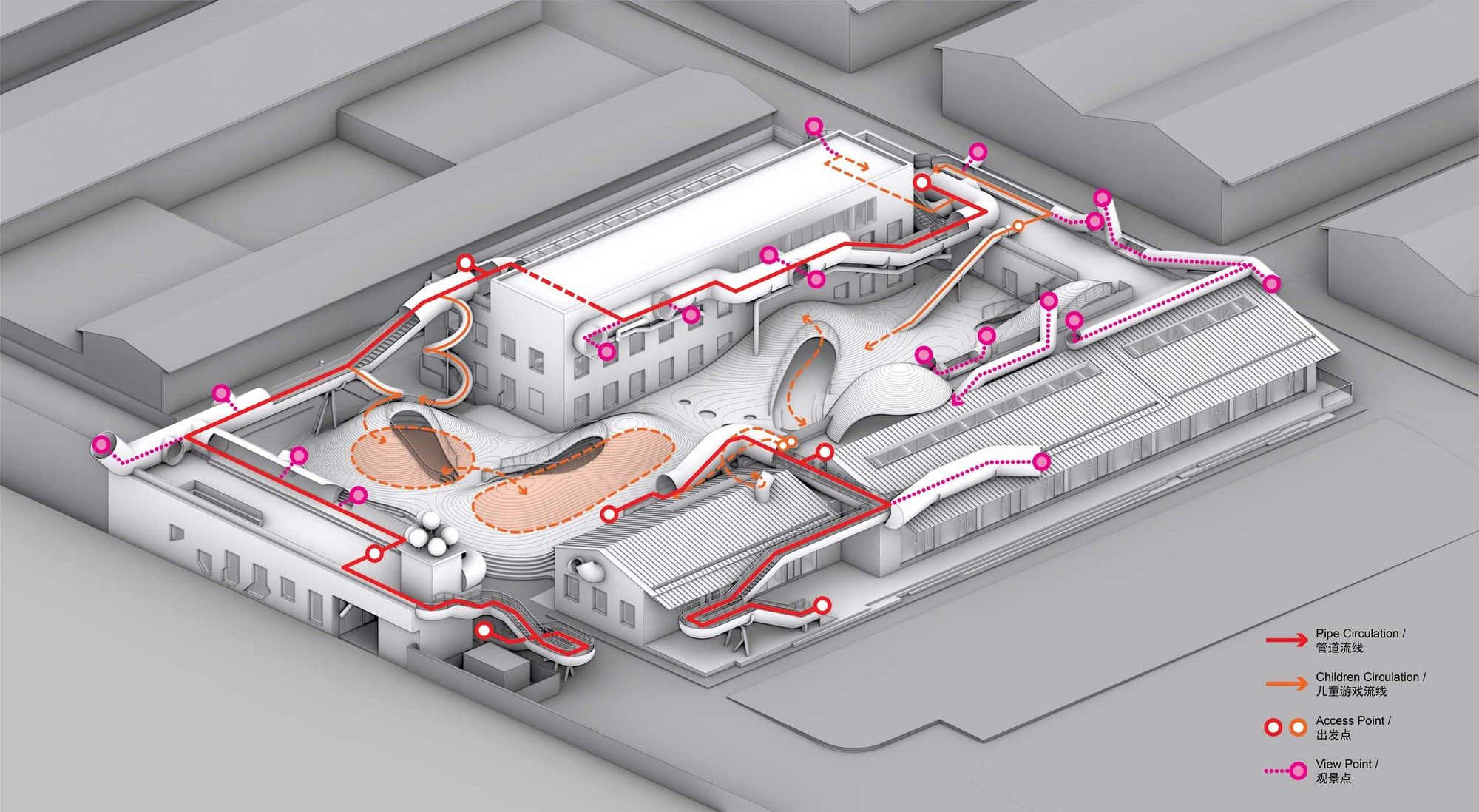The playscape is a refurbishment inside an existing industrial complex in the north of Beijing. A 1970’s warehouse complex for grain storage supported by a transport facility. Our client was a healthcare provider specializing in observing, and supporting children’s development relating to the movement for a broad range of age groups.
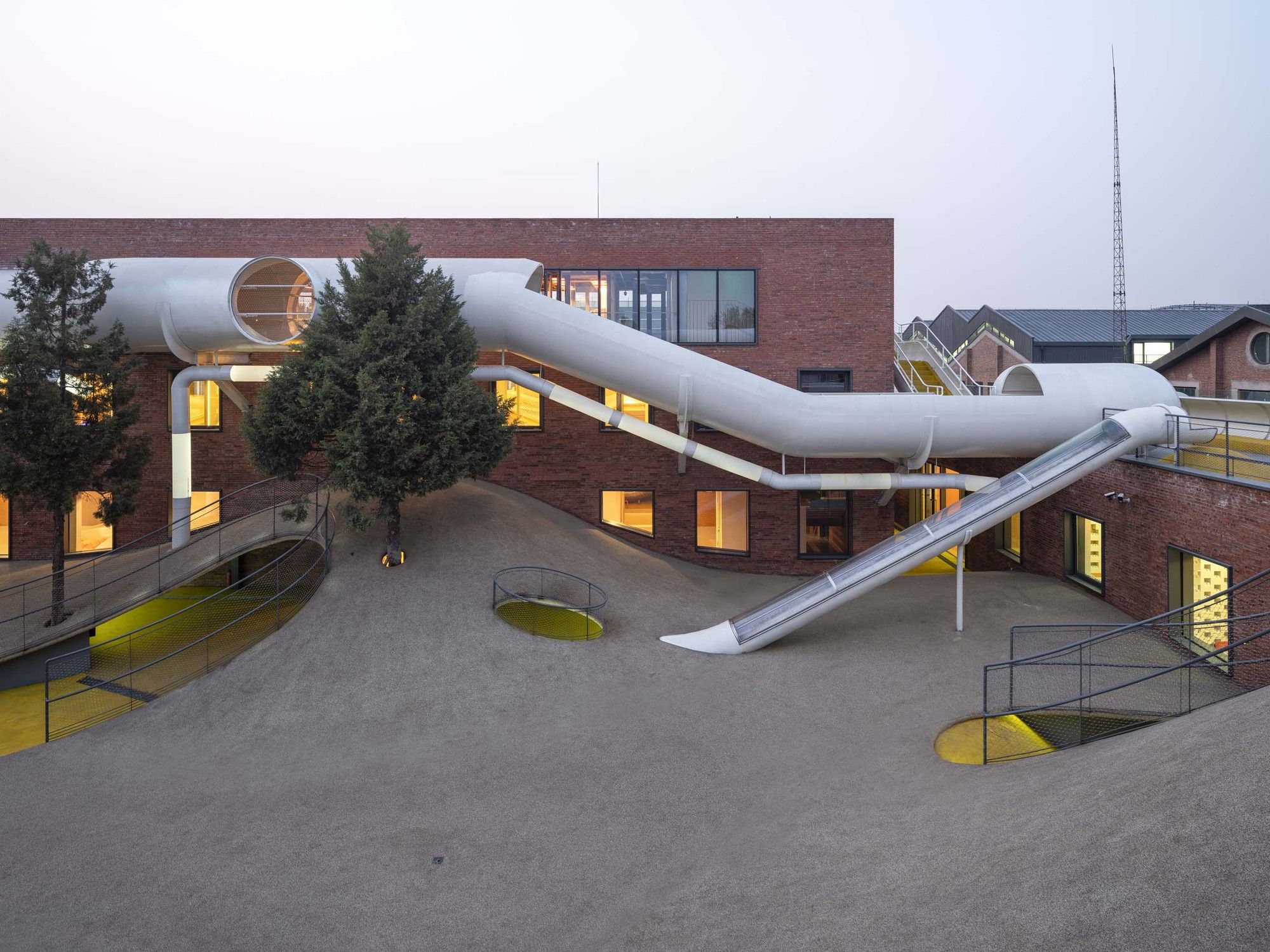
© Fangfang Tian
We believe the missing element of a child’s development in a modern Chinese city is chiefly a functioning neighborhood. We hoped to create the experience of street play and prioritize the reduction of gizmos and screen time. Drawing inspiration from popular culture of the past and abstracting important identities for our new neighborhood’s character. The playscape embodied the following traits:
- Hide and seek (Group interaction): Free-will is vital to engage a child’s imagination and promoting this interaction within a group.
- Adventure playground(Risk): Balance is invisible until we lose it, children decide what level of risk they feel comfortable experiencing.
- Nook and Cranny (Body Proportion): Spaces are designed for children with nooks to explore and understand ergonomics.
- Maze (Discovery): Places out of sight need to be explored to reveal themselves, the most efficient or direct route is not always the most enjoyable.
- Fantasy: (Imagination)The landscape is abstracted by removing iconography and allow flexibility in thought-based scenarios.
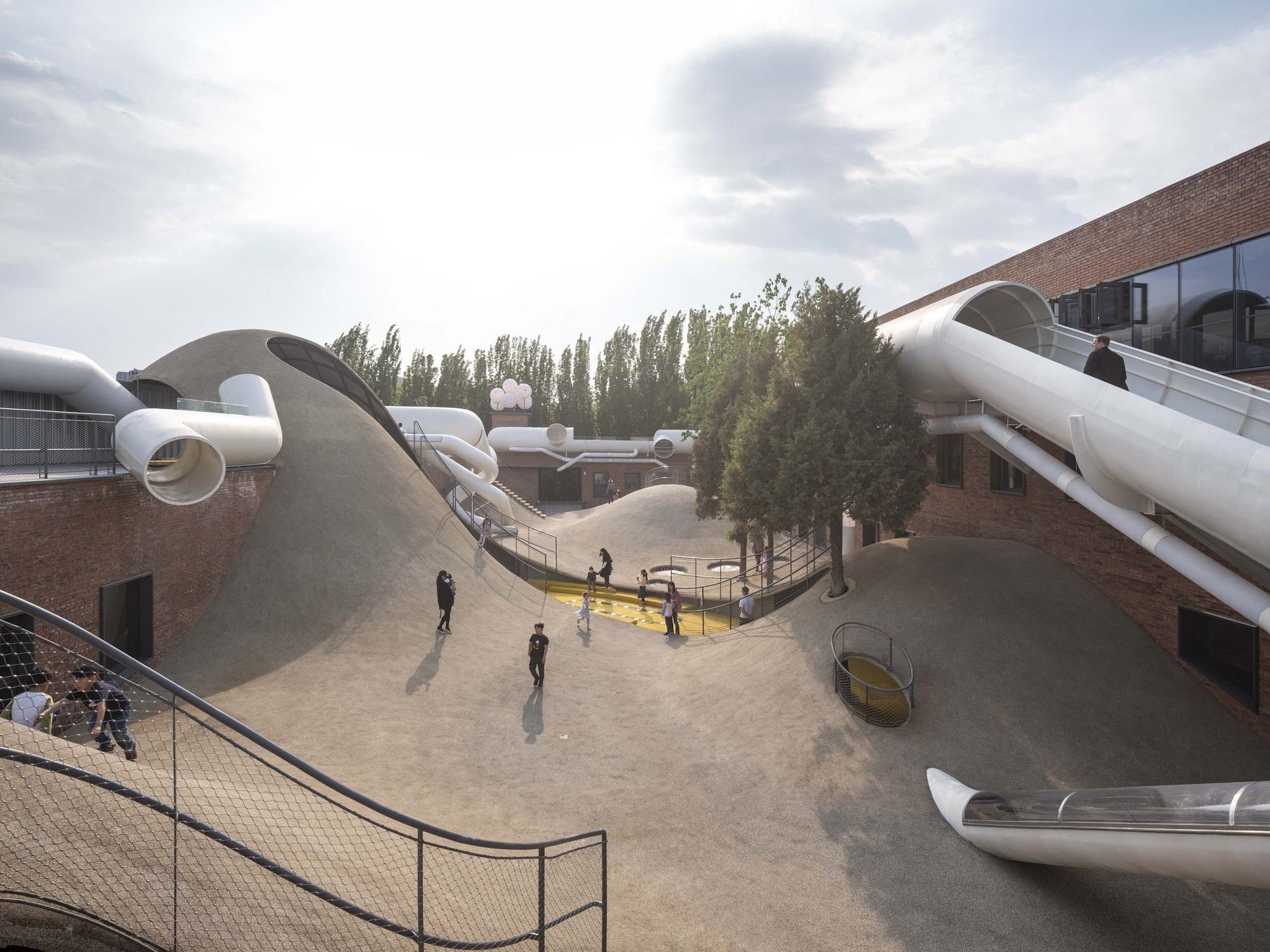
© Fangfang Tian
The playscape is a tool to promote learning while allowing narrative creation for children to dream and develop senses relating to equilibrium (balance) and proprioception (awareness). Balance is taken for granted until it is challenged. It is our hope that activity-based emotional responses to this built environment and the perceptions are harnessed. Can augment the client’s tools in helping strengthen coordination within the child’s development.
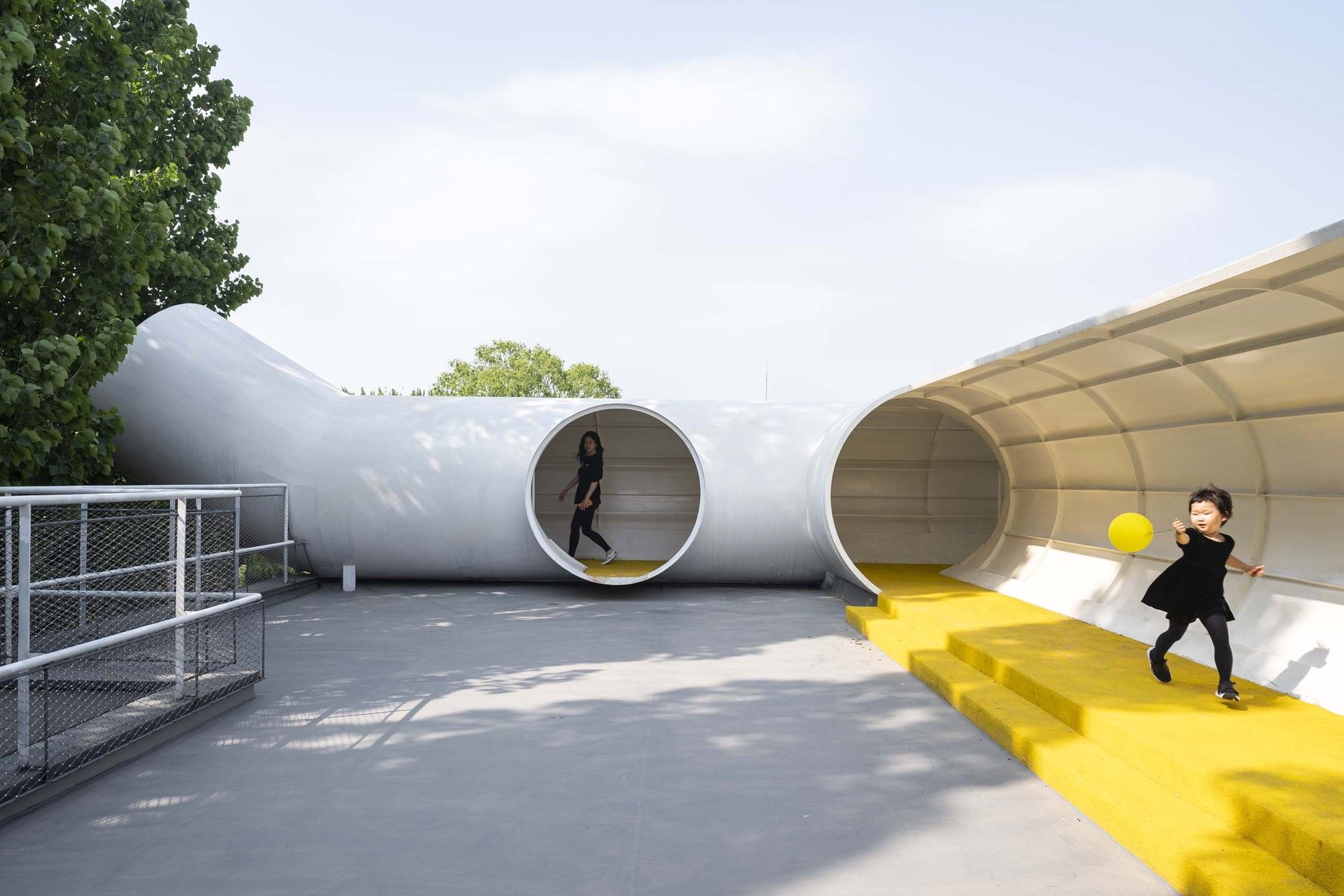
© Fangfang Tian
Pipe: Focuses on smaller Nook’s to test proprioception (body awareness). These armatures are arranged as a series of connecting bridges and staircases. Five diameter scales can be observed; 2.3m (Walkways) 1.7m (Staircases) 1.3m (Safety Balustrade) 0.8m (Slides) 0.4m (External Lighting).
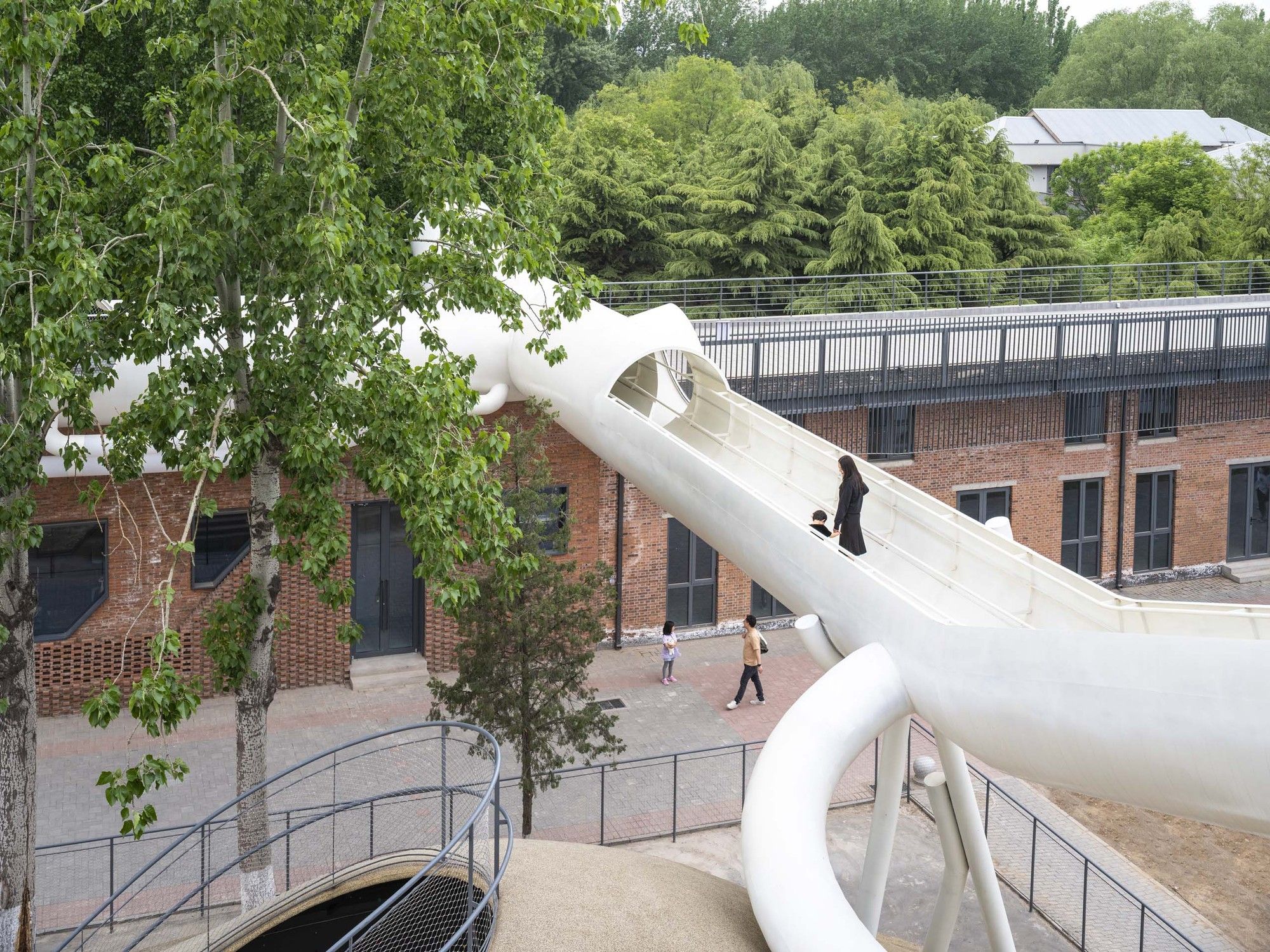
© Fangfang Tian
Roof: Presents a high point to overview the stage set and its possibilities and poses a choice to children to embrace unorthodox routes. A full loop can be made and children can travel from the terrace and transcend under the mound through slides that vary in height from 7m to 4.3m. The network impresses upon them alternative directions to goals, sometimes the second shortest route is more fun.
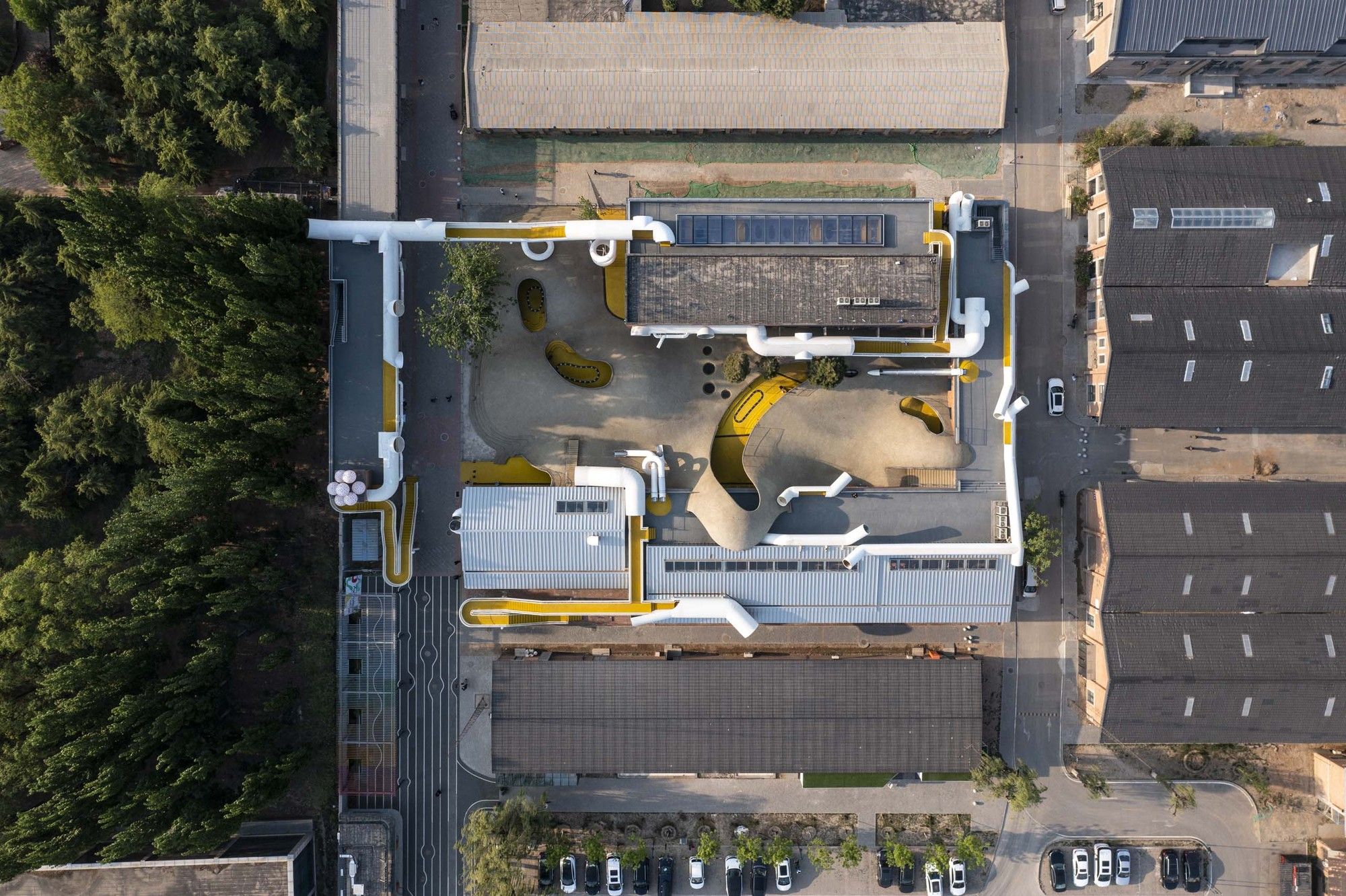
© Fangfang Tian
Mound: Enhances development in senses relating to equilibrium (Balance) and freedom of decision making. The mounds allow children to explore and decide on their comfort in regards to risk and by transcending a variety of inclines at speed. An additional area of covered play was created by harnessing the area under the topography. Access to which can be gained through a number of cuts or slides from the terrace level.
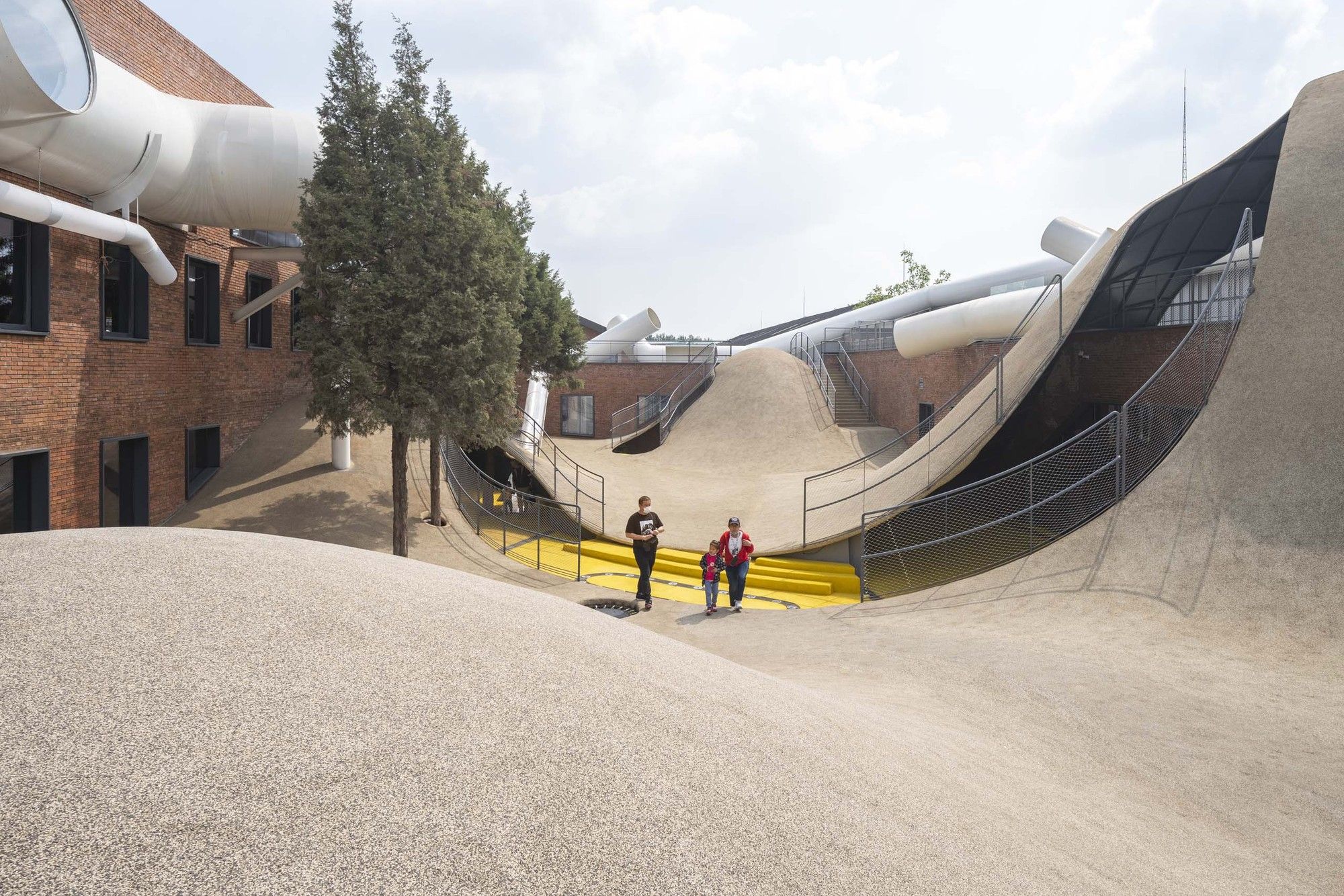
© Fangfang Tian
The building complex is formed by a cluster of existing warehouses encircling a courtyard. A public street disconnects the south building which is re-connected by the use of an aerial bridge to link the roof terraces. Access also provides a private route to an adjoining Kindergarten, and an option to enter the adjacent public park.
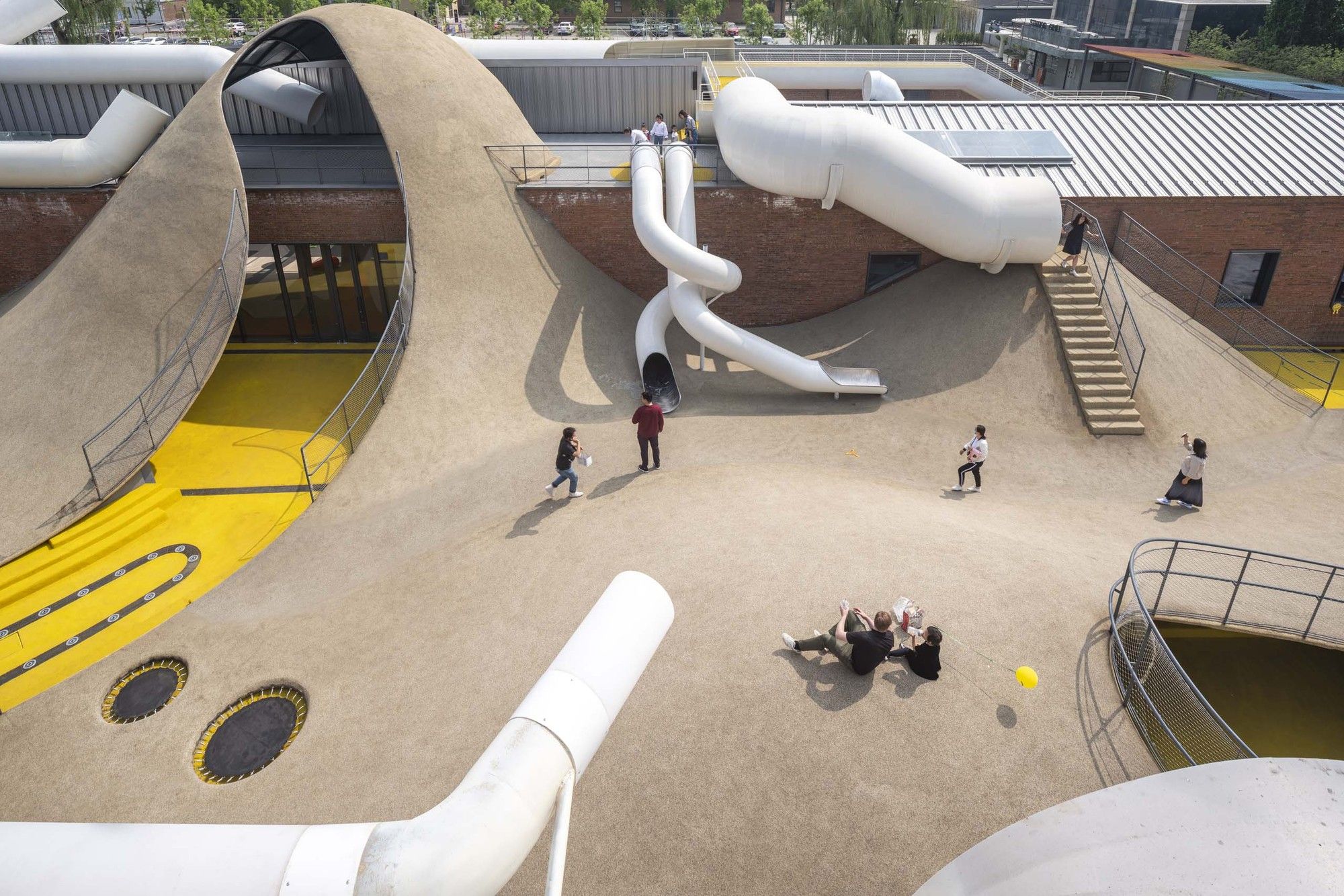
© Fangfang Tian
The existing cluster provides for 3 internal play spaces. Playspace 1 is a single-level low pitched 6m volume. Used for 2-4-year-olds as a crawlspace with hanging fabrics. Features also include a soft space topography for babies supplemented with a restaurant and library. Playspace 2 is divided vertically into three levels. A tiered environment for ages over 4 including a subterranean interactive environment, a steep climbing topography, with a suspended tensile Net all connected with slides.
Additional directed learning can be found on levels 2 and 3 with a total of 6 Multifunctional Classrooms. A single slide connects vertically 7m from the classroom to level 1. The South Building competes for the courtyard adjacent to the road with views into a public park. All buildings have a looped roof terrace easing parents’ observation of children while being able to access parent-specific amenities including a terraced bar.
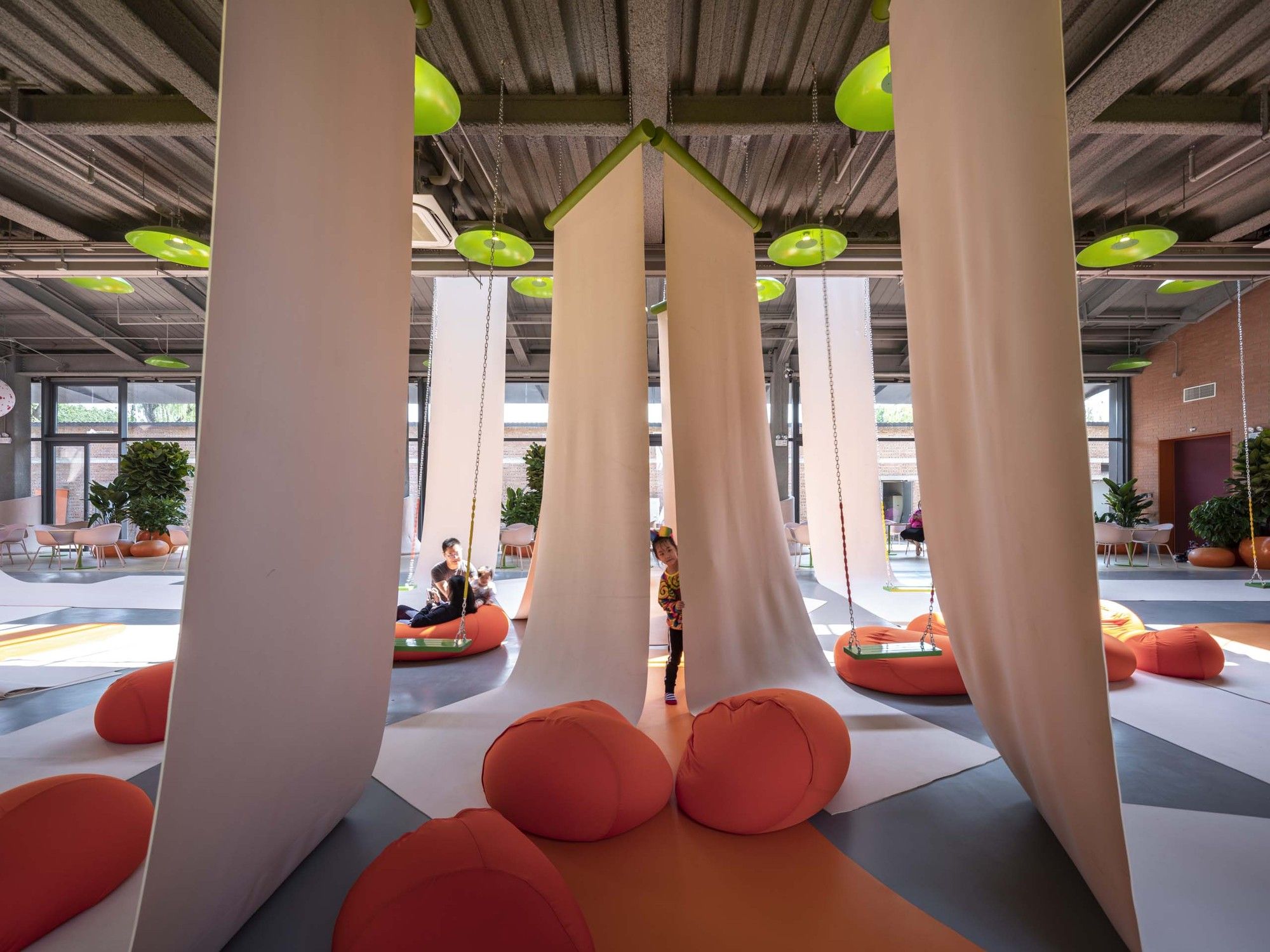
© Fangfang Tian
Children are often passive in decision-making scenarios. Play is often the only period under their own control. The Design Focus was to address the missing elements of inner-city dwelling, distorting scales, manipulating movement sequences to build a tool for sensory learning. Where the iconography of the project becomes about the activity and embracing a degree of risk we hope to nudge children to imagine and feel what they see as the limits to their own adventure.
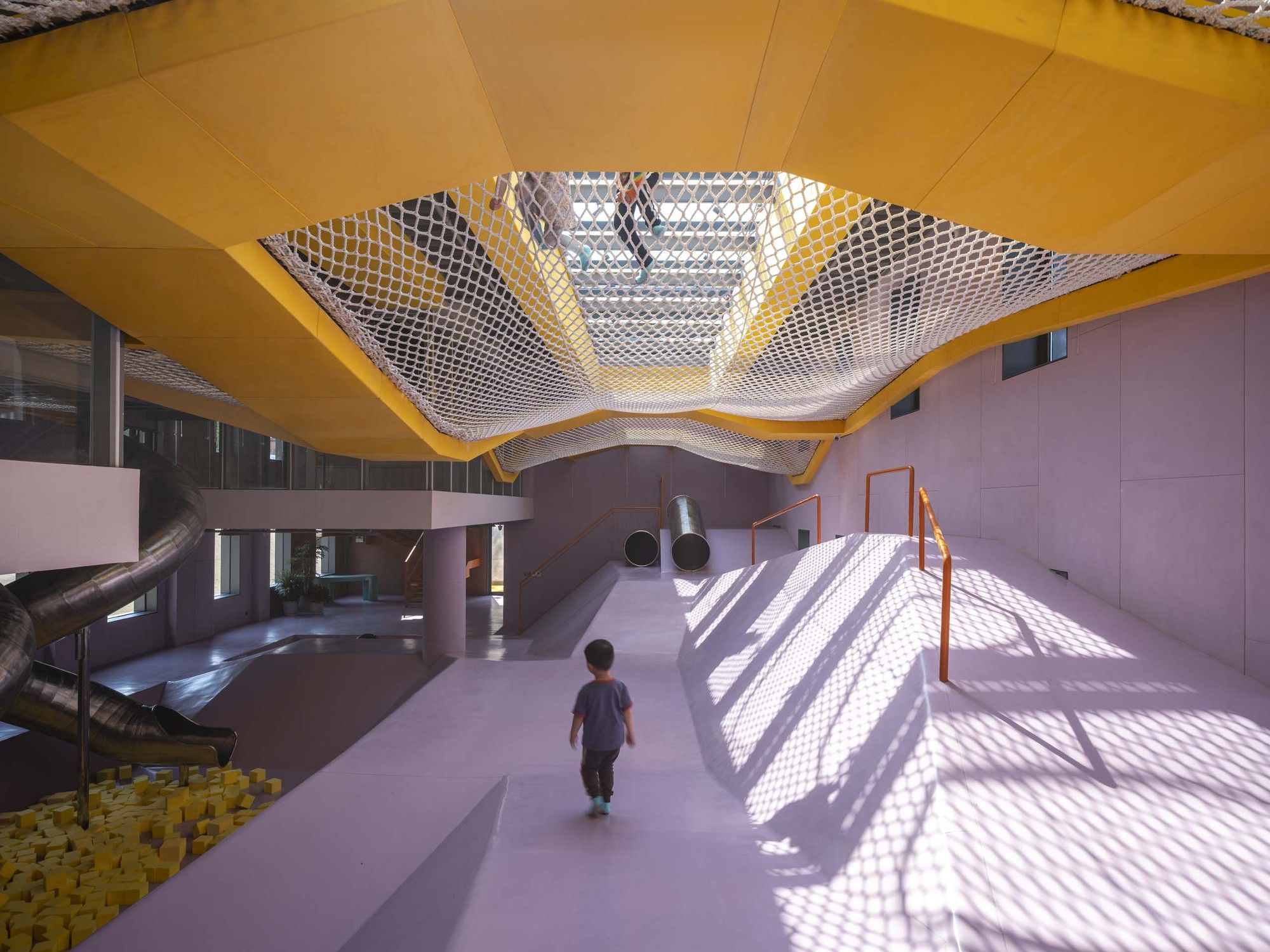
© Fangfang Tian
“In Play, you don’t foresee an end product. It allows you to suspend judgment. Often the solution to one problem sparks a possibility for another set of problems… In the actual building of something, you see connections you could not possibly have foreseen on that scale unless you were physically there” Richard Serra.
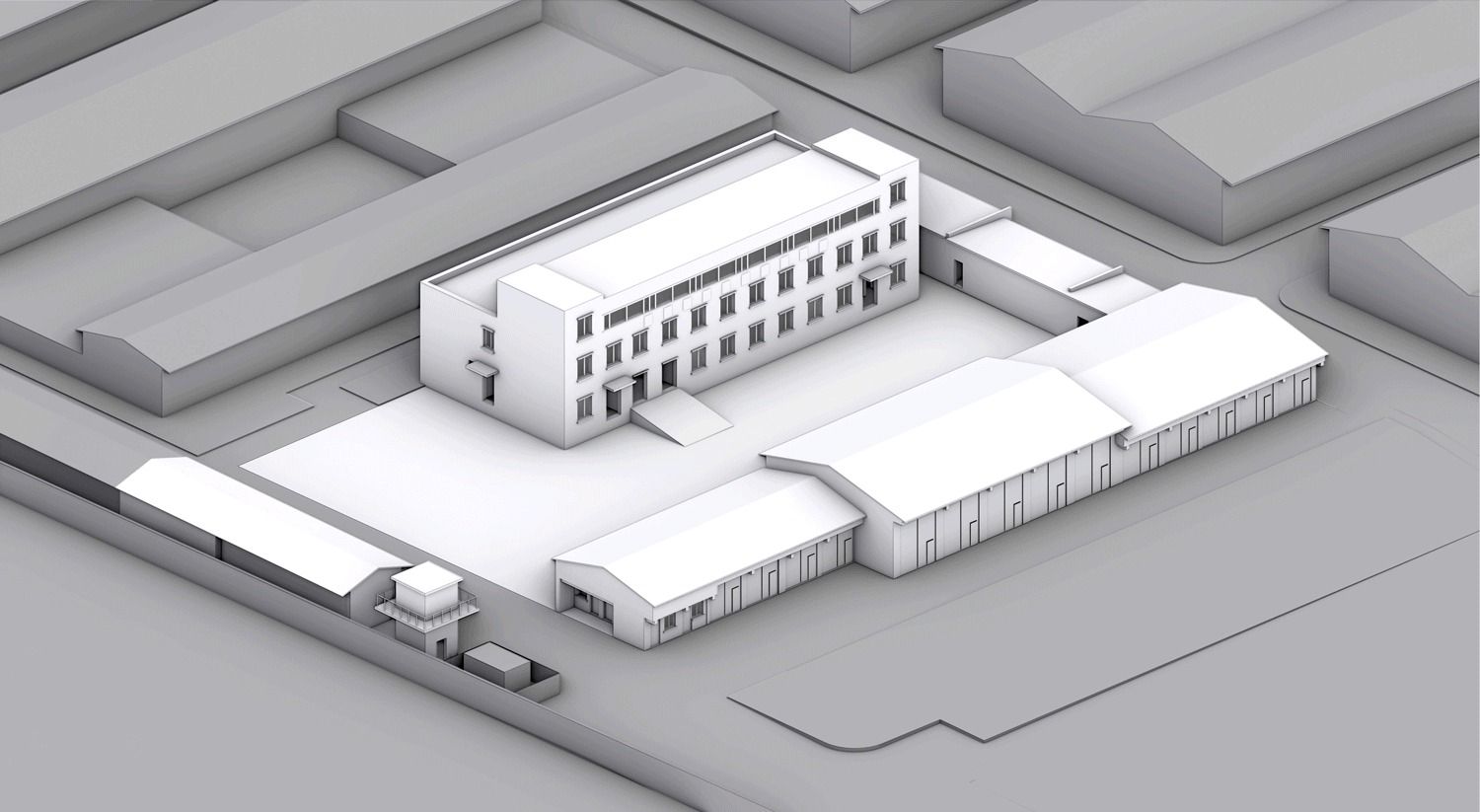
generation process GIF
Project Info:
Architects: waa
Location: Beijing, China
Area: 2657 m²
Project Year: 2021
Photographs: Fangfang Tian

